Troubling Behavior
Here I address what is generally referred to as behavior management, positive discipline, or guidance, issues that everyone faces in the helping professions — parents, professionals, friends or volunteers. It is always challenging, because difficult problems emerge in unique circumstances with unique individuals.
I tip my hat in acknowledgement of the many thoughtful people who have contributed their insights on a subject vital to everyone in a helping profession, however, the next 29 pages are unique. For one thing, this web site is not limited by being a book, and for another, I have constructed an educational experience in which you can actively participate. You can become aware of your habits and find pathways you choose to gain competence with challenging children. And it’s free.
I call it Leadership, because that is what the adult provides a class community or a family, and Care, because the adult brings their life experience, which provides a longer term view and the possibility of kindness and compassion in every moment.
This work is not about management, disciplinary devices, or control. It is not conveying to anyone a ‘right’ way to behave. It is not anyone telling you what to do. This not directive: this is an invitation, like an invitation to a party—if you decide to attend, you go, and whatever happens, happens.
The Nine Interrelated Topics of Leadership and Care
The topics ahead build upon each other in sequence. If you are working through this with others or as an independent study for college credit, I recommend the sequence. I also expect readers to click around; I would.
What We Want — We start by clarifying our purpose when we endeavor to provide leadership and care in facing troubling behavior. We shift from what we don’t want to what we do want. This includes an invitation to do the exercises along the way, not just skip over them. If you want to see where this work is headed, I offer a summary of the final understanding, kind of like a pre-test, right here on this introductory page: The Optimal Way to Manage Behavior. If you are satisfied you can do that, you’re done.
Clarifying Responsibilities — Where does responsibility lie when we have a problem? Which party has to deal with it? Me or you? You can watch a video and make those decisions for yourself.
Opening Dialogue — Right away we face the challenge of clarification. When we have a problem how do we set up communication, so we have shared expectations and defined opportunities?
Acting Assertively — As leaders we will not be pushed around. When we have a problem that is our responsibility to address, what do we do? Where do we start? What line do we pursue?
Offering Information — When we have a problem that is mostly the other’s responsibility to address, how do we communicate the necessity of taking that responsibility in a clear and trusting way?
Listening — When emotions are high, people often don’t think very clearly—no matter what age they are. How do we maximize our ability to listen and convey trust?
Negotiation — How do we offer spaces for children to practice dealing constructively with each other?
Management Protocol — OK, nothing is working. What do we do then? When all of our sophisticated leadership fails to make an evolving improvement, we have to have a strategy to follow. Here is how to employ a collaborative, systematic methodology to discover and implement an arrangement that works.
Using Rewards Effectively — Behind everything is conveying our genuine, authentic, and constant positive regard. We all can communicate positivity, but we can encounter children who have a remarkable expertise in manipulating adults and a strong distrust of those who attempt to reward them socially. Usually these children are very, very clever, so we have to know how to use other kinds of rewards without being trapped in their games.
My Good Fortune
I was educated by troublesome children in a community with others. I had the privilege of being on a team of adults for 17 years who had the time to work together to create a space for a constant stream children who were referred to us, because the people who cared for them found themselves at wit’s end. Our team all knew the same children, all watched the same videotape, and all looked at the same data. Although we lived in daily anxiety and uncertainty, we also lived in confidence that our efforts at documentation and a rare opportunity for dialogue filled with laughter would benefit both ourselves and the children.
Just as the children were my teachers, waves of adult college students taught me, too. For 23 years I led a class at North Seattle College called Behavior Management. I taught it in as constructivist a manner as I could. Over 700 participants in that class investigated the ideas I share at this site. Each of those people completed all of these tasks in their own care settings and brought their experience back to contribute to our mutual understanding. Gradually, over the years, I began to see how people in different contexts and cultures successfully changed themselves, in their own way, toward what they thought was best. They shed their feelings of being confused and trapped and, without being told what to do, evolved a new way that was founded in their own discoveries.
An Invitation to Study Leadership and Care
We can have the best intentions and loving hearts. We can think positive things for children and families. We can think of ourselves as basically good people. Yet, when something disruptive cuts in unexpectedly, we can lose our footing, feel personally attacked, and become angry.
I know that confusion and anger. Like many of us, I rationalized my responding with anger or disapproval because I didn’t know what else to do. They had to stop doing that, right now!
All of us can look at awful behavior and make it the child’s fault. Often we are reluctant to view ourselves as the problem. It was a long struggle for me to accept the reciprocal relationship I had with troublesome children—reciprocal in that learning goes both ways—and begin to get clarity about the necessity to change me, too. Eventually, I could calmly remember that in this time of trouble, the troublemaker and I tended to act out of habit.
As I lived in daily encounters with “troublemakers,” I videotaped the events, brought that documentation into the college classroom, and analyzed them with others. Together we constructed an understanding of how to evolve a place of comfort and confidence. Like almost everything at this web site, we used action research to provoke discussion, make meaning of what we saw, draw tentative conclusions, invent new actions, sustain consistent practice, and eventually discover the joy.
I am offering here the course I created at North Seattle College, which comes with a confidence in promising that if you engage in these opportunities with others in the next 29 pages, you will find difficult encounters a welcome learning opportunity for everyone.
Recognition of the Basic Inequality
 At first I did not see a child’s challenging behavior had anything to do with my power and privilege, since it was my job to improve things. I soon found that my intentions as a solver were undermined in one way or another by the unequal relationship we had. Adults have privilege over children; educators have privilege over students; guards have privilege over inmates. The expert role comes with an often unrecognized privilege of being the fixer while the problematic ones need the repair.
At first I did not see a child’s challenging behavior had anything to do with my power and privilege, since it was my job to improve things. I soon found that my intentions as a solver were undermined in one way or another by the unequal relationship we had. Adults have privilege over children; educators have privilege over students; guards have privilege over inmates. The expert role comes with an often unrecognized privilege of being the fixer while the problematic ones need the repair.
My guess is that if the roles were reversed and you were the child to whom power was applied, you might well adopt a similar warlike response. “Push me, and I’ll push back.” Resistance might escalate quite quickly, too. I would guess also that if you were a dispassionate observer of this “power-applied and resistance-returned” event, you might readily confirm that the less powerful one was contrary and disobedient. It is natural to expect the parent or teacher has a responsibility to get things on track, therefore, obviously, the less powerful one is to blame.
Recognition of Reciprocity
We naturally see the less privileged, the ones without power, to blame, being unaware of how they may be coerced or compelled to act without their agreement. Because the less powerful continue lack privilege, they can do nothing about it. Only the more powerful can create the opportunity for reciprocity, where each is learning from the other simultaneously and the scales are more balanced. When the children or students have little voice in the decisions about what happens to them, they are very likely to push back and resist, either actively, or the worst cases, passively. Passivity is the hardest problem of all.
Leadership and Care points the way first to disarm this power differential and then to gather the community to create a more just encounter. Each educator or parent is less of an authority and more of a leader who cares for each child, cares for the community, and offers the possibility of reciprocal learning in each encounter. Adults learn. Children learn.
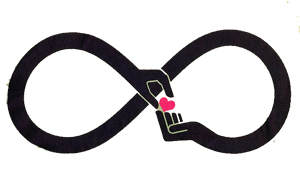 Since each here-and-now is different, and each here-and-now offers a fresh possibility for learning, nobody need be thought lacking. Nobody is needy at all. We are in this together. We are fellow human beings fortunate to be alive, with each other, in this moment.
Since each here-and-now is different, and each here-and-now offers a fresh possibility for learning, nobody need be thought lacking. Nobody is needy at all. We are in this together. We are fellow human beings fortunate to be alive, with each other, in this moment.
Recognition When Something Isn’t Working
I didn’t always see it that way. 40 years ago, when I entered a classroom of difficult children, I copied what others did. I assumed I was to talk they way they talked, for that was the culture.
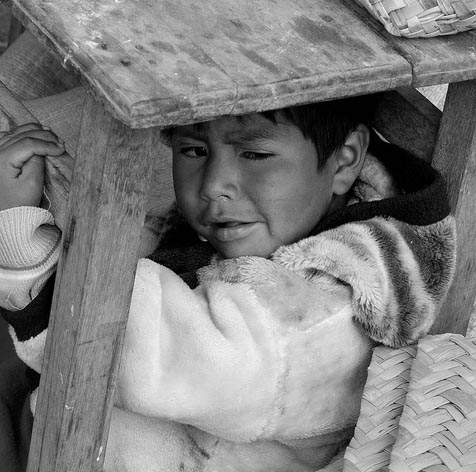 That’s not okay. — You need to use your words. — Shhhhh! — Don’t. — No.
That’s not okay. — You need to use your words. — Shhhhh! — Don’t. — No.
- Come out from under the table, okay?
- No.
- Look at me.
- No.
- What is wrong?
- (silence)
- It’s not okay to be under the table. You have to come out.
- (silence)
- Come out right now.
- (silence)
- Don’t make me pull you out.
- (throws shoe)
When I talked this way, I found it didn’t work very well. I naturally blamed them, after all they were trouble at home, and that’s why they were trouble here. My job was to get them to stop being a problem. I had no understanding of what to do. No one could show me how. I had no access to the child’s point of view. I took my frustration home with me. I lay awake in bed or tried to process it all while taking a shower.
Fortunately, we could make video recordings, observe systematically by taking data, and meet every day with others to watch the same recordings and discuss our observations. With documentation we began to invent alternatives. I tried new ways to present myself. I took a longer view: today was less important than incrementally working toward two months from now. These were amazing years of personal growth. I found joy. I found me. Those terrible, awful, wild young children challenged me to become more playful and loving, the true me.
This Opportunity
This site links pages of information, stories, exercises, and documents that invite you to select from alternatives and choose what you try. Here you can watch candid videos of children without talking heads trying to tell you what to think. You can watch them with others, discuss the issues, arrive at your own meanings, do exercises that apply techniques, and print handouts and wall charts to post in ready reference. I offer this as an integrated unit evolved through years of experience offering them to 700 people who constructed their own way to do it.
- I offer constructivist experiences — you draw your own conclusions and construct your own way to act in accord with your situation, culture, and values.
- I offer a specific, shared language to make collaboration with others more productive.
- I offer testable alternatives for you to investigate with your children.
- I offer a promise that this stuff actually works; many hundreds of people can testify to that.
- I offer my trust that you and your close ones will discover a path to transform your lives.
Undertaking Personal Change and Transformation
Leadership and Care is about changing your own behavior, not the child’s. What follows is a journey of experimentation through application. As you try to apply each idea in your life you will discover a new way to be that is more satisfying and more loving. Your application gives you results, which when examined systematically become your research.
The steps are relatively simple to do and more nuanced when undertaken with a team. Changing ways of being takes time—usually six months to a year; one can’t read something and immediately behave differently, but reading opens choices and opportunities. Leadership and Care is the result of years of mistakes and practice before it became a path I could offer.
I put together a two-page Applications PDF with formal assignments to complete. I assume it takes about 3 months to get through them. There’s no hurry. It’s slow time. How else have you learned anything important?
Is this for you?
Do you have any of these questions?
- What do I do when personally hurtful confrontations interfere with my intention to do good?
- When something obviously is not working with this child, where can I find an alternative strategy?
- Wanting a deep understanding that applies to all children, how can I synthesize all strategies in one cohesive construct?
- Paying it forward, how can I help others understand this and become willing to evolve their abilities, too?
Principles at Work Here
We cannot change children; we can only change ourselves. I have learned that I am the one with the overarching responsibility for change. I don’t manage or alter others; I intentionally manage myself and alter the space of the community. That is why I call this work Leadership and Care. Those words imply a positive, proactive place to stand.
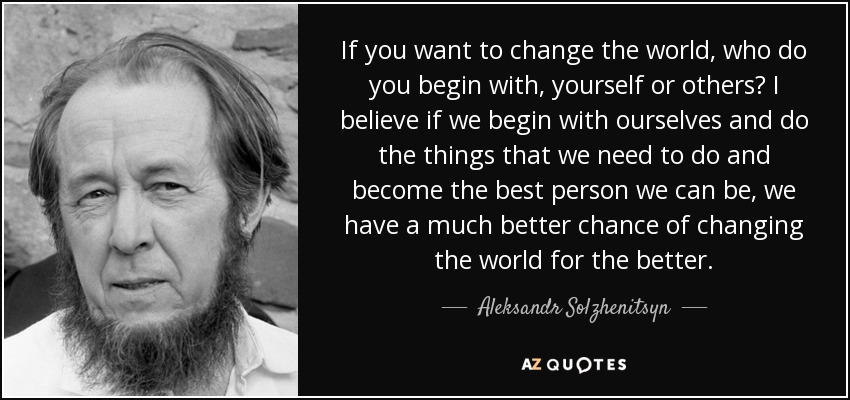
Leadership acts in service to a community. The way leaders — teachers, parents, volunteers, — behave with children can optimize the child’s opportunities to grow out of habits that are constraining of experiences — ours and theirs — in concert with others in a community of peers.
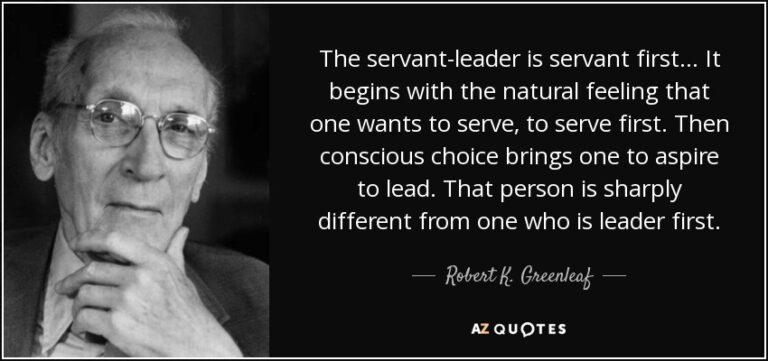
An ethic of care opens when we understand our interdependence. The caring leader stands firmly assertive for the cared-for and offers, in a timely way, actions of substance that better things immediately. Alternatively, the caring leader acts supportively in the background for the cared-for in a responsive willingness to listen and to offer resources and opportunities.
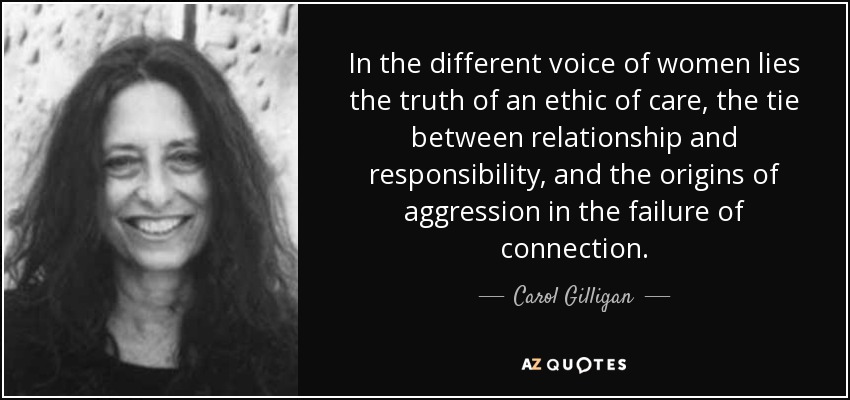
An Invitation
I invite you into the possibility of never again worrying about contrary or disruptive behavior. My hope is that generations to come can make Leadership and Care their own. If they do, they will naturally pass it forward in their own strength of being—calm, clear, and assured—passing on a natural culture.
Student Reflection
I had never known teaching children was such an art. I used to be so frustrated with difficult behaviors in the classrooms where I worked, not being sure what to do. I felt I had enough love, care, and sensitiveness to not treat the children disrespectfully (yelling or spanking, for example) but not enough knowledge to know how to treat them respectfully and get them to do the desirable things.
I have started to see difficult behaviors as challenges that I can overcome, that are opportunities for me to apply what I have learned to real life situations and can then simply see how it works. This new way of looking at difficult behaviors has made going to work more exciting to me.
When I first began working with children, this is what I remember thinking: Why is working with and disciplining little children not even half the fun of playing with them without any responsibilities? Do I really like children? I’ve always thought I did.
I have had reflections on my own childhood, too. I remember at preschool being made to stand on a chair (while others were sitting) for talking at group time, being spanked and made to kneel when once I decided I wanted to get up and sing during rest time, or being slapped on the face when I kept forgetting my part in a group dance. I am pretty sure these have something to do with the tendency to feel guilty and blame myself I have always had, among other things. I hope as more and more people learn about Leadership and Care, like this, there will be fewer and fewer children like me.
—Lan Nguyen